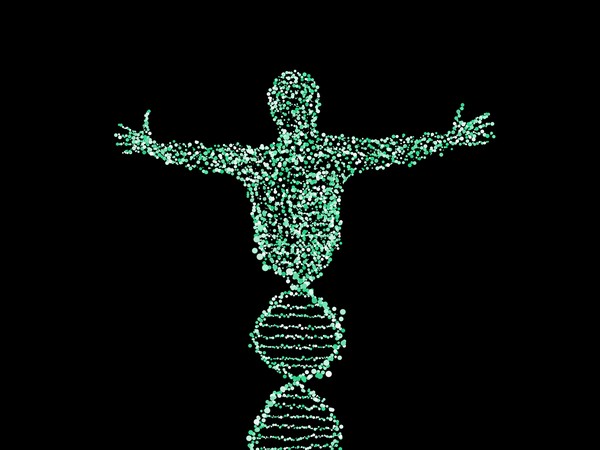When a child is born, it is normal for adults around him to identify some similarities with the father, mother, siblings, grandparents, or even distant relatives.
But why do children look like their parents and, if they have siblings, are they similar to each other?
This happens because they inherit certain characteristic traits that are transmitted to them from generation to generation, through inherited genes. This characteristic is associated with what we call heredity.
The information responsible for these characteristics is encoded within genes. Each of us has thousands of genes, made up of DNA. In turn, the genes group together, forming chromosomes. In the conception of the individual, the parents pass to the children, through the sex cells, sets of chromosomes.
The father provides 23 and the mother another 23, making a total of 46 chromosomes, a characteristic number of the human species. Although the information for the characteristics of an individual is provided by the genes that constitute their chromosomes, the manifestation of these characteristics is influenced by the environment, thus not corresponding exactly and only to the information contained in their genes.
The sets of genes transmitted to the child result from a random transfer when sex cells form in their parents' bodies. When the two sets come together (in the fertilization process), they give rise to new combinations that make each child unique, sometimes more like the mother and other times more like the father, but always an exclusive product of a new combination of chromosomes.
This described phenomenon will occur again when this child grows up and has children of his own. This will contribute a mix of your genes to the new child, thus ensuring that many characteristics of your family are passed on and maintained over generations and generations.
It is also important to consider the transmission of characteristics, which the same can happen in the case of genetic diseases, such as Paramyloidosis, the so-called “little feet disease”, or the Machado-Joseph disease, whose origin may have occurred in Portugal.
Parents pass the disease-causing genetic mutation to their children. The disease may or may not manifest itself throughout your life. Heredity brings with it many positive characteristics of ascendants that, side by side with possible hereditary genetic diseases, make up the unique being that each human being is.
Note: Text written by Ivone Fachada under the Science@Bragança project and now available for the “Culture, Science and Technology” project of the Portuguese Press Association
Author: Ivone Fachada is the executive director of the Centro Ciência Viva de Bragança.
Postgraduate in History of Science and Science Education at the University of Aveiro and University of Coimbra (attendance of an interdisciplinary doctorate).
Master in Nature Management and Conservation from the University of Azores.
Degree in Forestry Engineering from the Polytechnic Institute of Bragança.
member of ScicomPT – National Science Communicators Network, being part of the Board of this Association between October 2017 and May 2020.
Teacher trainer, accredited by the Scientific and Pedagogical Council for Continuing Education in the domains: “A64- Environmental Sciences” and “D08 – Environmental Education”.
Author or co-author of more than thirty articles in journals, conferences and book chapters.




















Comments